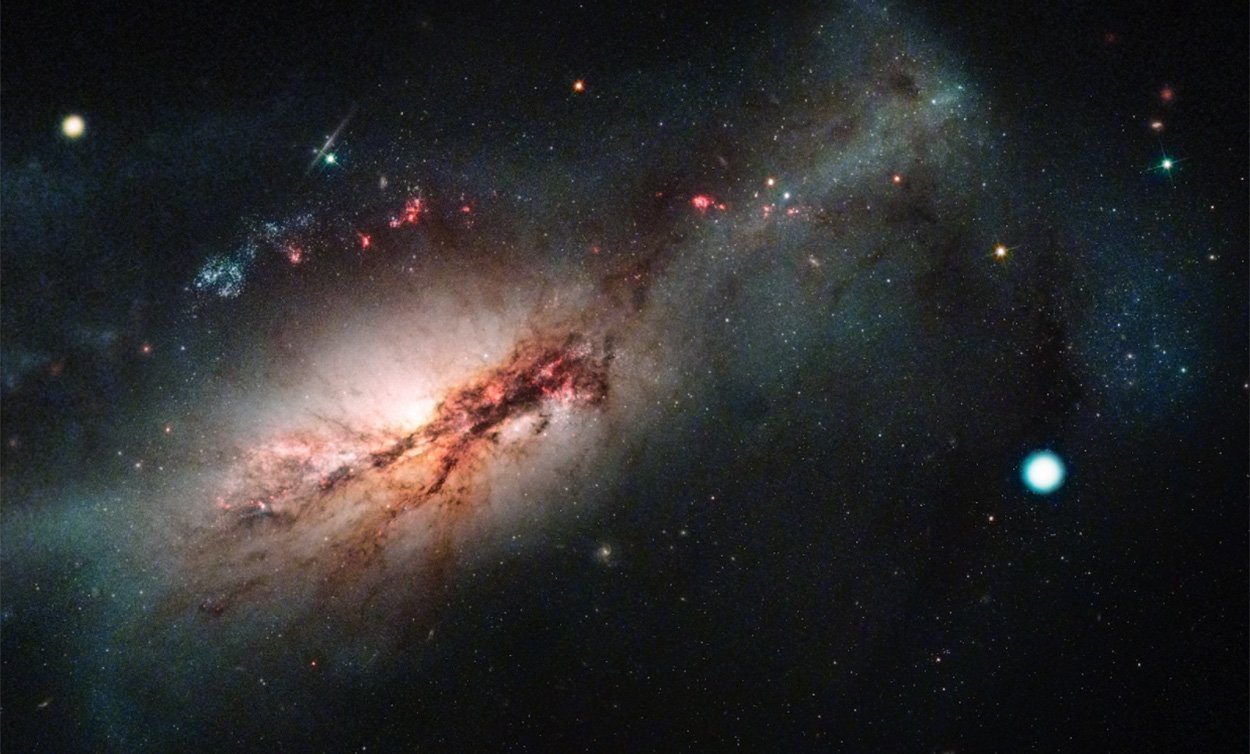Two types of stellar outbursts have been known for a long time, but there was no clear evidence of observation for a third. Now, for the first time, astronomers have identified an example of this third type, known as an electron capture supernova. This stellar explosion, observed in 2018, occurred because a massive gravitational force pushed the electrons in the star’s core into its atomic nuclei. This caused the star to collapse and with it the supernova explosion. The new data now also sheds new light on the famous Crab Nebula – the glowing remnant of a medieval supernova visible in the sky.
There are usually two main catalysts for a star’s explosion: In a primary collapse supernova, a massive star over ten times the mass of the Sun largely consumed its fusion fuel. As a result, nuclear fusion subsides and there is no longer enough external radioactive pressure to compensate for the gravitational effect of stellar matter. As a result, the star’s core collapses and an explosion occurs. The second type, a thermonuclear type Ia supernova, occurs in binary star systems. When a star with a mass less than eight solar masses becomes a white dwarf there, it often sucks material from its companion. If the maximum mass is exceeded, an explosion occurs. But what happens to stars that weigh between eight and ten solar masses?
Electron capture collapse
A theory about the end of such midweight stars was formulated about 40 years ago by Kenichi Nomoto of the University of Tokyo and others. According to this, these stars initially expand into giants, while the nuclear fusion of atoms in their core merges until a significant part of the core consists of oxygen, neon and magnesium. After that, fusion stops because the pressure in the core is not enough to start the next step, fusion to form iron atoms. As a result, radiation pressure decreases and gravity compresses the atoms in the nucleus so strongly that electrons are pushed into the atom’s nucleus. This process, known as electron capture, makes the nucleus unstable and explodes in a supernova. Wow the theory. However, it has not yet been possible to clearly prove the existence of this type of supernova on the basis of astronomical observations. Daiichi Hiramatsu of the Las Cumbres Observatory in California reports that “no supernovae could be identified as being caused by electron capture – also because theoretical predictions were partly unclear.”
Now, however, this may be the first time a supernova has been detected that captures an electron. The starburst was observed in a galaxy 31 million light-years away in March 2018 and has been followed by various telescopes on Earth and in orbit for the next two years. “It gives us a really complete and excellent data set that goes from resurgence to vanishing,” explains co-author Azalee Bostroem of the University of California, Davis. In addition, the team of astronomers succeeded in comparing images of the former star with old images from the Hubble and Spitzer space telescopes. These results indicate that the former star is in fact the so-called Super-AGB star – a red giant with an atypical neon-oxygen core.
Combining all the data, astronomers have identified six features that indicate that the 2018zd supernova is an electron-capturing supernova. In addition to the previous star, this also includes huge losses in mass before the explosion, an unusual composition of the light spectrum, a relatively weak explosion as well as little radioactivity and a neutron-rich core. “All of these SN 2018zd properties can be explained by an electron-capturing supernova,” says Hiramatsu.
Explain also the Crab Nebula
In the opinion of astronomers, their observations indicate that supernova 2018zd is in fact this third type of supernova, which has been theorized until now. “That was a real ‘Eureka’ moment for us where we can now help confirm a 40-year-old theory,” says Hiramatsu. Nomoto commented, “I am very happy to discover an electron-capturing supernova. This is a great example of how theory and observation are integrated.”
The discovery of an electron-capturing supernova could shed new light on one of the most famous supernova remnants: the Crab Nebula. This glowing gas structure, located about 6,300 light-years away in the constellation Taurus, was created by a star explosion in the year 1054. According to the records of Chinese astronomers, this supernova can be seen in the sky during the day for 23 days, and its twilights Blast for two at night. But although this supernova remnant is one of the best ever studied, the type of stellar explosion that caused it has been debated. However, the knowledge gained by observing SN 2018zd is now helping to identify some features of the Crab Nebula that were previously difficult to explain and indicate that it was also created by an electron-capturing supernova. “The term ‘Rosetta Stone’ is often used as an analogy, but it’s really appropriate in this case,” says co-author Andrew Howell of the Las Cumbres Observatory. “Because Supernova 2018zd is now helping us decipher records from around the world that date back thousands of years. It helps us connect a phenomenon we didn’t understand before, the Crab Nebula, with a well-documented event like this supernova.”
Coil: Daiichi Hiramatsu (Las Cumbres Observatory, Giulietta, CA) et al., Natural Astronomy, doi: 10.1038/s41550-021-01384-2

“Alcohol buff. Troublemaker. Introvert. Student. Social media lover. Web ninja. Bacon fan. Reader.”






More Stories
Ecologists Celebrate New Xesap National Park in Laos | Science
Is the wrong diet making you forget?
We can study it with a new telescope.